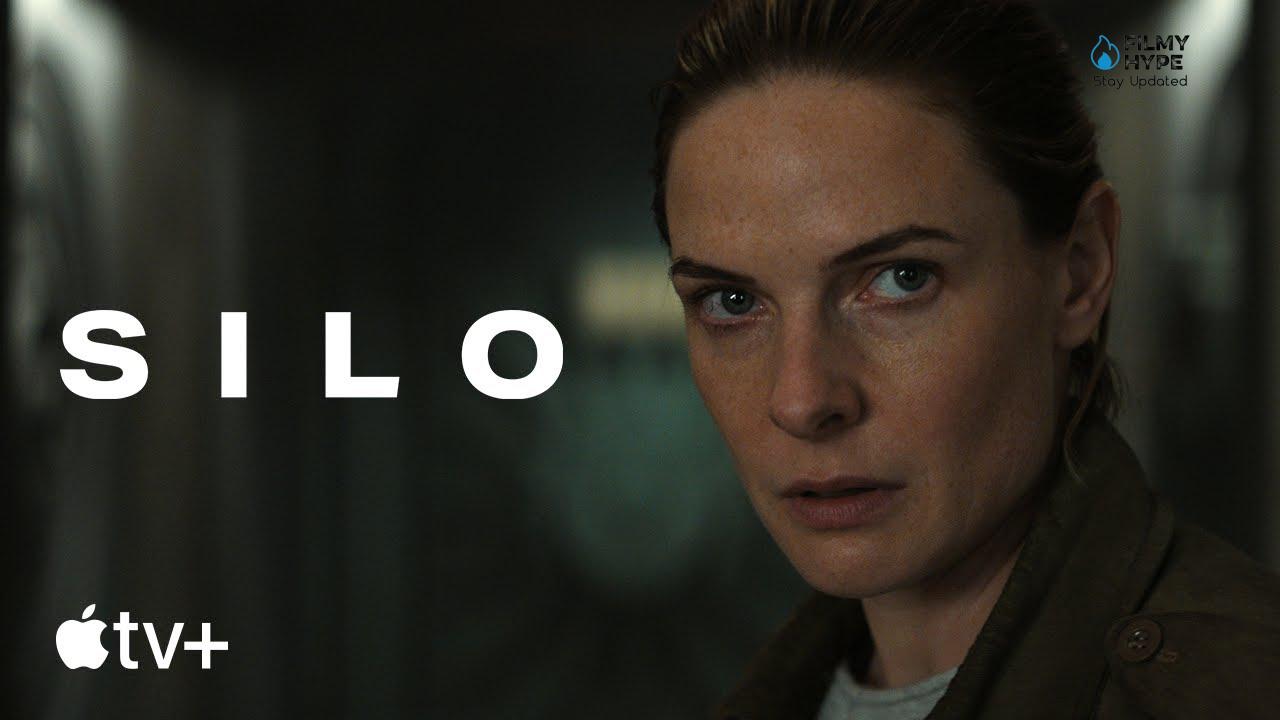Silo Season 1 Ending Explained: Are There Dozens of Other Silos? But What is the World Like Out There?
Silo is a television series that made its debut on Apple TV+ last May. At the moment, it has only one season with a total of ten episodes, the last of which aired just a few days ago. It is a compelling plot capable of attracting the public’s curiosity so much that, in a short time, it has become one of the most-watched TV series ever. And this has allowed Apple TV + to take revenge against direct opponents such as Netflix, Disney+, and Amazon Prime Video. The TV series is based on the popular novels of the Silo Trilogy written by Hugh Howey and tells the story of the last ten thousand inhabitants of planet Earth who are protected from the outside world (toxic and deadly) thanks to their house a mile deep.

But this Silo when was it built? And for what reason? It is not known and indeed all the people who try to investigate face fatal consequences. Juliette Nichols (played by actress Rebecca Ferguson) is an engineer searching for answers about the murder of someone close to her, but while doing her research she stumbles upon a mystery far more tangled than she could ever imagine and comes to understand that if lies don’t kill you, then the truth will. And after the final episode no doubt Silo managed to get everyone’s attention. Below we leave you the explanation of the last episode, but if you have not yet had the opportunity to watch the end of the TV series, do not continue reading the article to avoid unwanted spoilers. The tenth episode had Outside as its title, or abroad and we can say that many known outstanding until now have finally come to the surface. In the meantime, let’s take stock of what we’ve discovered with our explanation of the Silo season 1 finale.
Silo: Summary Recap
Silo tells the story of the last ten thousand people on Earth, who live more than a kilometer deep, protected from the toxic and deadly outside world. No one knows when or why the Silo was built, and anyone who tries to find out faces fatal consequences. The fiction stars Juliette, an engineer who is looking for answers about the murder of a loved one and finds herself trapped in a much deeper mystery than she could have imagined, which will lead her to discover that if lies don’t kill you, the truth will.
The novels written by Hugh Howey are the basis of the new Apple TV+ series: the main setting is precisely a huge Silo in which an unknown number of human beings have been locked up for centuries. The outside world has been devastated and the only salvation has been confinement, creating a new society made up of strict rules and a rigid social ladder. However, some community members begin to doubt that the reality outside the fortress/prison is made up only of death and devastation. Among them is Allison (Rashida Jones), wife of Sheriff Holston (David Oyelowo), intent on uncovering the truth about what is really going on. The woman will set in motion a chain of dramatic events that will see the engineer Juliette (Rebecca Ferguson) protagonist almost despite her, a woman with a painful past who wants to discover the truth about the “accidental” death of her lover.
The first episodes of Silo directed by Morten Tyldum (Oscar nomination for The Imitation Game, Passengers) have a dramatic depth worthy of the best productions of this genre. The director manages to make the most of the enormous work of composition of the main set to create an atmosphere of placid despair, an environment that protects and at the same time does not allow those who live confined there a real freedom of expression. The pathos generated by the personal story of the characters brings Silo closer to some pillars of negative literary utopia, first of all, 1984 by George Orwell. In addition to a pilot of undoubted emotional impact, the next two episodes also immerse the viewer in a very well-defined universe, whose aesthetics somehow refer to steampunk in the desire to use retro sets and costumes – even if in this case the precise reference it’s the 70s.
As the story progresses through the episodes, the show focuses more on the development of the plot and the detection, slightly losing effectiveness in the representation of inner conflicts. Notwithstanding this discrepancy, Silo is still a show that knows how to entertain with evident competence and knowledge of the rules of dystopian science fiction. Credit for the success must also be attributed, if not mainly, to a remarkable cast of actors. Rashida Jones is the absolute and exciting protagonist of the first episode, an all-around female portrait who immediately becomes heroic in her search for the truth. In the next episode, it’s up to David Oyelowo to elevate Holston’s figure, leading him through a precise and painful human parable.
Silo Season 1 Ending Explained: Why All These Bans on Duct Tape?
From the beginning of her misadventures, the protagonist has had to deal with the infamous accusation of having stolen stocks of adhesive tape to carry out maintenance on the lower floors. A “crime” whose gravity is all in all incomprehensible, even in a particularly repressive and authoritarian system such as that of the Silo. In the last episode, Juliette Nichols discovers the real secret of duct tape, and this saves her life: apparently on the lower floors of the Silo, where the spare parts technicians work on the maintenance of the gigantic power generator, there is a very more resistant than that of the higher levels. In fact, without adequate adhesive tape, the spare parts area could not carry out its precious repairs (we had an example of this in the third episode) and keep the entire structure running.
But why is it that on the upper floors, much richer and more affluent than the lower floors, tape of the same quality is not available? Once again, as in the case of the absence of lifts, it is all a question of manipulation and control of society: on the upper floors, the adhesive strips are used above all to seal the suits of those who go by choice or by constraint – to the outside world to clean the camera. With poor tape, everyone who makes it out of the hatch dies from atmospheric contamination, since the suit isn’t insulated enough. Thanks to the support of the maintenance area technicians, Juliette manages instead to have her suit sealed with slum tape, thus demonstrating to all the inhabitants of the Silo that a means to survive on the surface exists and has been kept hidden for years by those who – like Mayor Bernard Holland – governs the structure.
But What is the World Like Out There?
Since the first two episodes, the series has led us to believe that a green and lush world existed out there and that the manipulation perpetrated by those who govern the Silo consisted in altering the images transmitted by the camera located on the exit hatch. Well… not so. Indeed, the camera does nothing but convey the real state of affairs. The surface of our planet is effectively reduced to a barren post-apocalyptic wasteland, and the atmosphere is indeed contaminated with radiation or some unknown toxic substance. However, someone has created a sophisticated hologram that gives anyone leaving Silo the impression of being in an authentic paradise.
Why bother to pull off such a deception? We still don’t know the true motivations of those who created the illusion, but we can already formulate some hypotheses. Perhaps the projection serves to induce those who go outside to breathe deeply, or even to take off their helmets, to hasten their deaths. Death is caused, we reiterate, by the malfunctioning of the insulating tape, which lets air transpire from the outside into the suit.
Are There Dozens of Other Silos?
But if the planet is truly deserted and contaminated, why resort to all these manipulations of reality? What’s to hide over the hill? It is certainly not a verdant and habitable world as our protagonists believed, but a much more disturbing secret. The hologram also serves to prevent those who go outside to see reality from a different angle than that transmitted by the camera. Around the Silo, beyond the rise that marks the edge of the horizon, there are dozens of other circular depressions of the same size, in the center of which are the hatches of many other Silos.
Is it possible that, after the collapse of civilization on the surface, humanity has locked itself in so many isolated Silos, forming small independent communities convinced they are the last survivors of their kind? The final scene could also explain why, on the lower floors, there is a horizontal passage: perhaps the door found by Juliette is a clandestine passage that allows access to another Silo. For now, Mayor Bernard Holland seems to be the only one who knows the truth, while the judiciary led by Robert Sims is completely in the dark.
To Clean or Not to Clean? This is the Dilemma
Now let’s try to dwell a little more on Hamlet’s choice between cleaning or not the camera screen. What we do know is that, in Juliette’s case, for the first time in the history of the Silo, someone went outside and didn’t polish the eye of the projector. The choice sparked a roar from the entire community, and shortly after came the revelation that it is possible to survive beyond the confines of the hill. Now will winds of revolt begin to blow in the slums of the Silo. It is certainly plausible. What is certain is that all the others cleaned the screen because, deceived by the hologram, they tried to show whoever was inside what was out there.

According to the false rhetoric of the regime, however, they were doing it because they wanted to remind the community that the world is still uninhabitable, and the time to leave had not yet come. Silo wants to explain to us the importance of political symbols and gestures. It matters little that those who clean do it for the reasons the government talks about, or to reveal a hidden truth to those inside. The only way to change the cards on the table is to act, break tradition and stop doing what you’ve always done. Juliette is a true revolutionary because she refuses to clean not because reality is different from what it appears, but because she dares to contradict a tradition that has been perpetuated for over two hundred years.
The Big Unanswered Question?
During the frantic chases of the last two episodes, we can say that we have guessed why the pact that underlies the government of the Silo prohibits the construction of elevators. By forcing humanity to exclusively use the spiral staircases, the movement of individuals and masses can be easily monitored and blocked by the regime’s “watchdogs”, the Giudiciali. In doing so, everything can be easily controlled from a control room: not surprisingly, to escape her pursuers, Juliette uses the waste duct, which is the only thing that vaguely resembles an elevator. However, a big unanswered question remains: why, in addition to elevators, are magnifying devices prohibited in the Silo? Is this a simple form of anti-scientific obscurantism, or is there some other secret lurking in the shadows?



